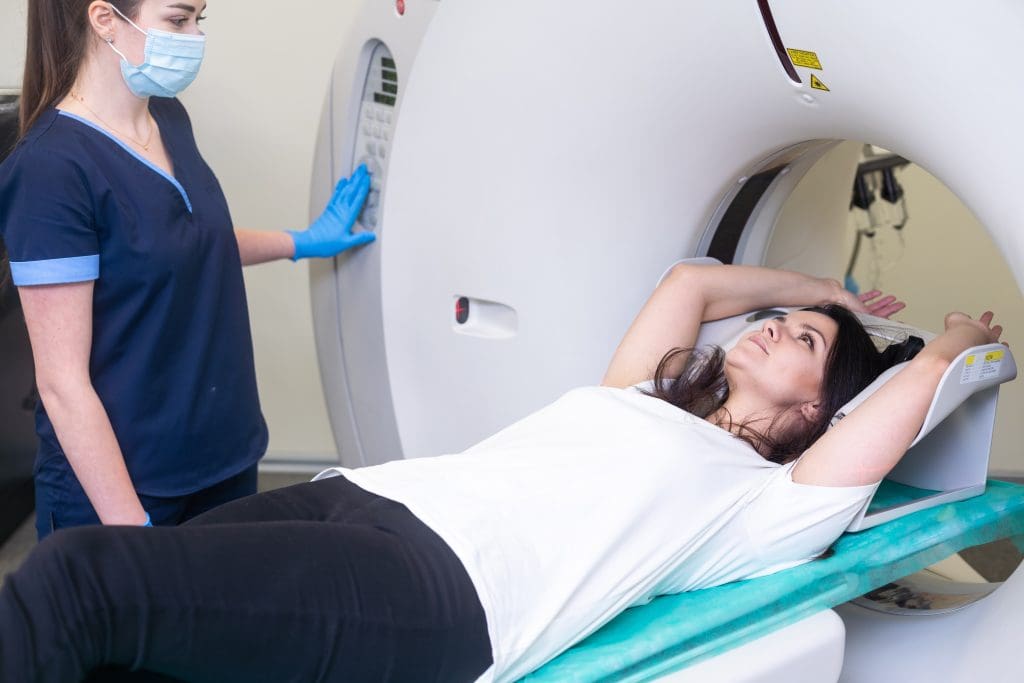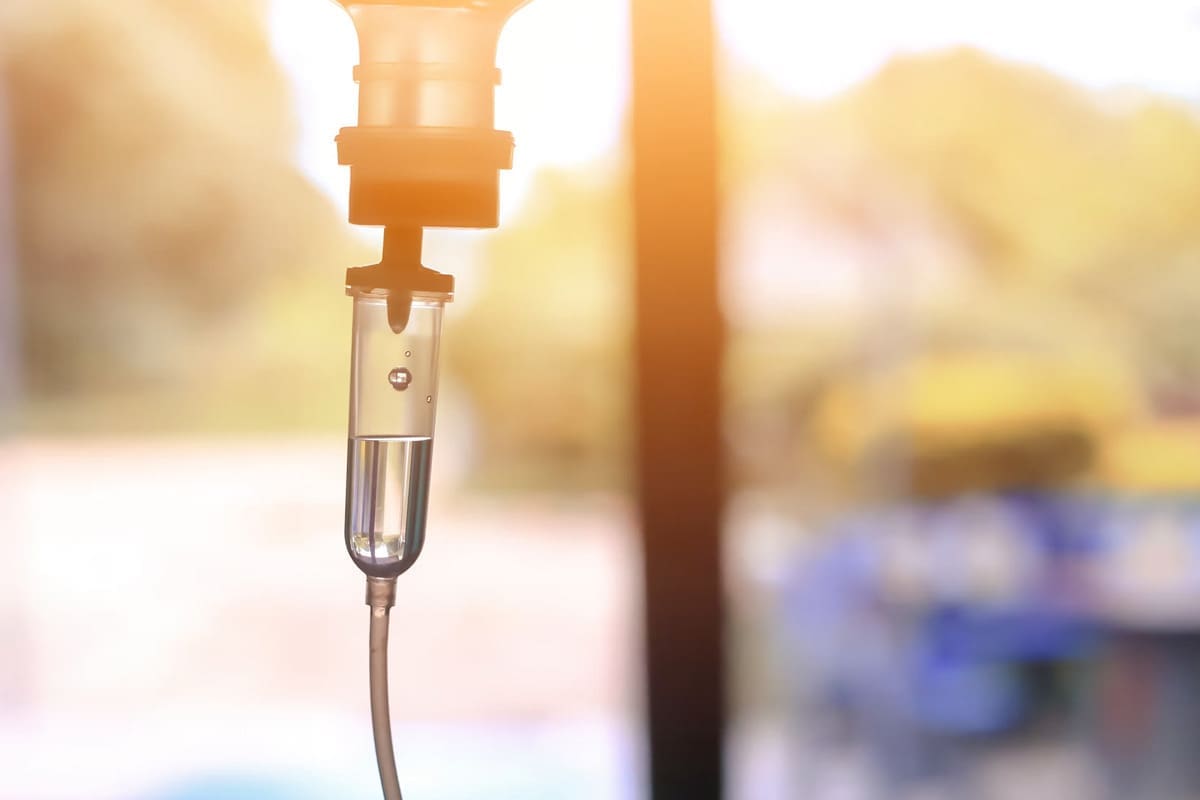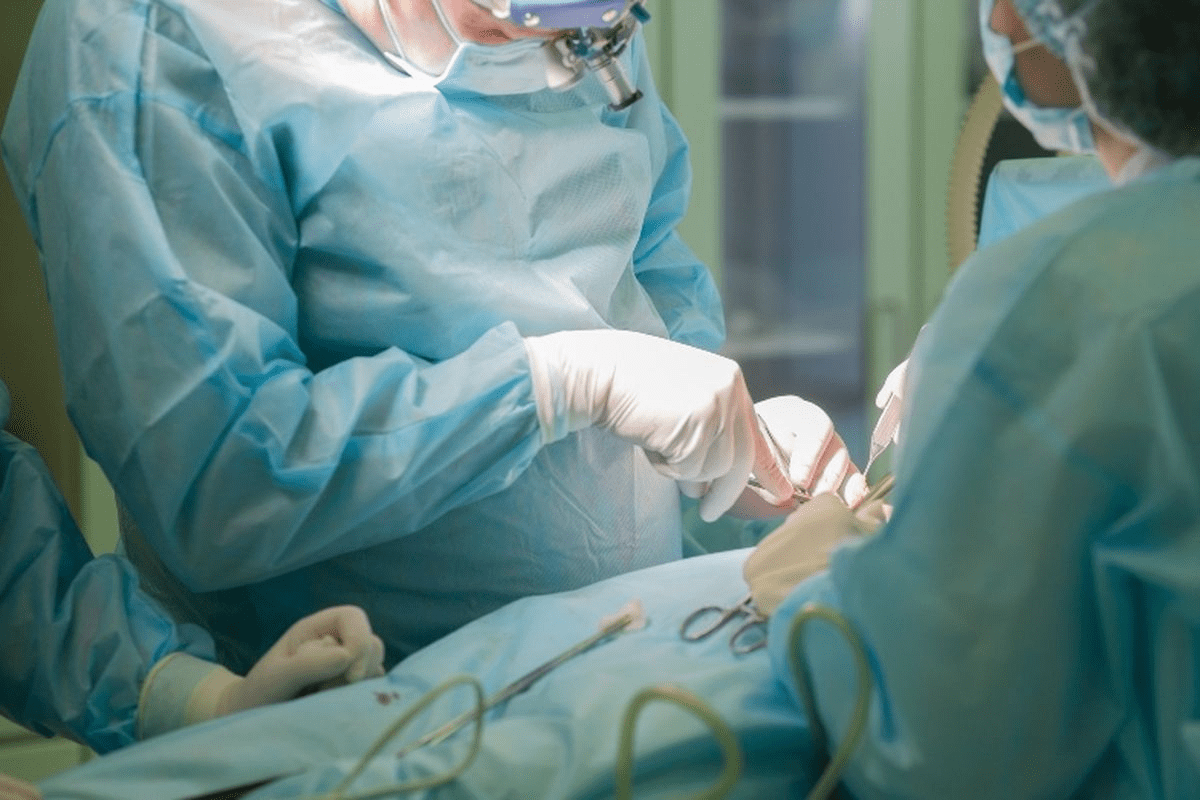Last Updated on November 27, 2025 by Bilal Hasdemir
Getting a PET (Positron Emission Tomography) scan is an important step in diagnosing and treating health issues. Still, many patients wonder, “what should I avoid after a PET scan? While the procedure is generally safe, often advise drinking plenty of water to help flush the tracer from your body, avoiding close contact with pregnant women and young children for several hours, and following any special instructions from your care team. These precautions help protect both you and those around you.
After a PET scan, tell patients to take steps to lower radiation risks for others. The scan uses a radioactive tracer that stays in the body for a while, giving off radiation. Knowing how long this stays in the system helps figure out the right precautions.
This article will help you understand how long you’re radioactive after a PET scan. It will also cover what steps to take after the scan.
Key Takeaways
- PET scans involve the use of a radioactive tracer.
- The tracer remains in the body for a limited time.
- Precautions are necessary to minimize radiation exposure to others.
- Understanding the duration of radioactivity is key to taking appropriate precautions.
- Post-PET scan guidelines can vary based on individual health conditions and the type of tracer used.
What Is a PET Scan and How Does It Work?

The PET scan is a powerful tool for . It uses radioactive tracers to show what’s happening inside the body. This helps see how the body works and find problems.
PET scans work by adding a small amount of radioactive tracer to the body. This tracer is taken up by cells. Then, it emits positrons that collide with electrons, creating gamma rays. These rays are caught by the PET scanner, making detailed images of the body’s inner workings.
The Science Behind PET Imaging
PET imaging is based on how different parts of the body work. It uses tracers that go to areas that are very active. This helps find diseases or damage.
A cardiology resident, says, “The discoveries we make in veterinary medicine often have broader implications, and research provides the platform to share these insights across disciplines.”
“The use of PET scans has revolutionized the field of oncology, allowing for more accurate diagnosis and staging of cancer.” “
- Oncologist
Types of Radioactive Tracers Used
There are many types of tracers for PET scans. The most common is Fluorodeoxyglucose (FDG). It checks how the body uses glucose. Other tracers target specific cancers or check the heart’s health.
| Tracer | Application |
| Fluorodeoxyglucose (FDG) | Assesses glucose metabolism; used in oncology and neurology |
| Flurpiridaz F-18 | Used for cardiac imaging to assess myocardial perfusion |
| Florbetapir F-18 | Used to detect amyloid plaques in the brain, associated with Alzheimer’s disease |
Knowing about the different tracers in PET scans shows how versatile and powerful this imaging is.
How Long Are You Radioactive After PET Scan
PET scans use radioactive tracers. But how long does the radiation stay in your body? The time it lasts depends on the tracer type and your health.
Average Radiation Duration in the Body
Most people stay radioactive for 24 to 48 hours after a PET scan. This time can change based on the tracer used. For example, Fluorodeoxyglucose (FDG) usually makes you radioactive for about 24 hours. Your body gets rid of the radioactive stuff mainly through urine and feces.
Factors Affecting Radiation Clearance
Several things can affect how fast your body gets rid of the tracer. These include:
- Age and overall health of the patient: Older or sicker patients might clear it slower.
- Type of radioactive tracer used: Different tracers clear at different speeds.
- Hydration level: Drinking lots of water helps get rid of it faster.
- Metabolic rate: If you metabolize faster, you might clear it quicker.
Knowing these factors helps patients and take steps to reduce exposure. Remember, PET scan radiation is usually safe and temporary.
Safety Guidelines for Contact with Others
After a PET scan, it’s key to follow safety guidelines to lower radiation exposure for others. Patients need to know how to protect their loved ones and the public from radiation.
General Distance and Time Recommendations
To cut down on radiation exposure, patients should keep a safe distance from others, mainly in the first few hours after the scan. The distance recommendations differ, but usually, patients should:
- Stay at least 3 feet away from others
- Avoid close contact, such as hugging or kissing
- Limit time spent in crowded areas or public transportation
These precautions effectively reduce the risk of radiation exposure to others. The time needed to keep these distances varies. It depends on the radioactive tracer used and the patient’s health.
Physical Contact Limitations
Keeping distance is not the only thing. Physical contact limitations are also important. Patients should avoid:
- Sleeping in the same bed as others for the first night
- Engaging in intimate contact for a recommended period
- Sharing utensils or personal items
By sticking to these rules, patients can greatly reduce the risk of radiation exposure to those around them. It’s wise to follow any specific advice from the healthcare provider or nuclear medicine department.
Special Precautions for Vulnerable Groups
After a PET scan, it’s important to be careful around certain people. This includes children, pregnant women, and infants. They are more at risk from radiation.
These groups need extra care to avoid too much radiation. Here are some steps to keep everyone safe. They help the person who had the scan and those around them.
Guidelines for Contact with Children
When you’re around kids after a PET scan, keep a safe distance. Children are more sensitive to radiation because of their size and growing bodies. Here’s how to reduce their exposure:
- Stay away from kids for at least 24 hours after the scan.
- Don’t hug or kiss them.
- Find other ways to connect, like talking or reading, from a distance.
Avoiding Pregnant Women and Infants
Pregnant women and babies are very sensitive to radiation. It’s very important to keep them away from it. Here’s what to do:
- Don’t get too close to them for at least 24 hours.
- Keep a safe distance when you’re together.
- Don’t spend too much time with them.
By following these tips, you can greatly lower the risk of radiation harm to these vulnerable groups.
Post PET Scan Precautions at Home
These precautions effectively reduce the risk of radiation exposure to others.
Bathroom Hygiene and Waste Management
Keeping the bathroom clean and safe is very important after a PET scan. Patients should:
- Flush the toilet twice after each use to get rid of radioactive waste.
- Wash hands well with soap and water after using the bathroom.
- Not share personal care items like towels and washcloths.
It’s also wise to clean bathroom surfaces, like the toilet handle and sink, with a disinfectant. This helps lower the risk of radiation exposure.
Sleeping Arrangements and Shared Spaces
For sleeping, patients should use a separate bed from others, like children and pregnant women, for at least 24 hours after the scan. This step helps protect those who are more sensitive to radiation.
| Precaution | Duration | Reason |
| Sleep in separate bed | At least 24 hours | Minimize radiation exposure to others |
| Avoid close contact | 24-48 hours | Reduce radiation exposure to family members |
| Maintain good hygiene | Throughout the day | Reduce risk of radiation exposure |
By taking these precautions, patients can greatly reduce radiation exposure to others. This ensures a safe recovery after a PET scan.
Radiation Exposure Levels from PET Scans
It’s important to know how much radiation PET scans use. These scans use tiny amounts of radioactive tracers. They help check for diseases like cancer and brain disorders.
The amount of radiation from a PET scan is something to think about. It can affect your health later on. But, the good things PET scans do are usually worth the risk.
Comparing PET Scan Radiation to Daily Exposure
PET scans give off more radiation than everyday background radiation. Everyone gets about 2.4 millisieverts (mSv) of background radiation each year. A PET scan can expose you to 4 to 7 mSv. This can change based on the tracer and the scan’s details.
Here’s a table to help you understand:
| Source of Radiation | Typical Exposure (mSv) |
| Annual Background Radiation | 2.4 |
| PET Scan | 4-7 |
| Chest X-ray | 0.1 |
Cumulative Effects of Multiple Scans
Getting many PET scans can raise health risks. But, they help see how diseases are doing and how treatments work. This makes them useful, even with some risks.
should only do PET scans when they really need to. They should also try to use less radiation. Patients should talk to their about their total radiation exposure.
Key Considerations:
- PET scans use more radiation than X-rays but it’s not a lot.
- need to watch how many scans you have.
- Patients should know the risks and benefits of PET scans.
Managing Side Effects After Your Procedure
PET scans are generally safe, but some people might feel side effects. It’s important to know how to handle these and when to get help. This helps you recover smoothly.
Common Physical Reactions to Radioactive Tracers
After a PET scan, you might feel some physical effects from the tracer. These can include:
- Fatigue or feeling tired
- Nausea or an upset stomach
- Headaches or dizziness
- Discomfort or pain at the injection site
Most of these effects are mild and go away quickly. But, it’s key to watch them closely.
When to Contact Your Healthcare Provider
If you have any of these symptoms, call your healthcare provider right away:
- Severe or persistent reactions that don’t get better
- Signs of an allergic reaction, such as rash, itching, or trouble breathing
- Increased pain or swelling at the injection site
- Fever or chills
Your healthcare provider can help manage these side effects. They can also decide if you need more care.
It’s always better to err on the side of caution when it comes to your health. If you’re unsure about any symptoms, don’t hesitate to reach out to your healthcare team.
Returning to Work and Public Spaces
It’s important to know the rules for going back to work and public places after a PET scan. After a PET scan, your body gives off a little radiation. This radiation goes down over time.
When you can go back to normal activities depends on a few things. These include the type of radioactive tracer used and your health.
Timeline for Resuming Normal Activities
Usually, you can go back to normal activities right after a PET scan. But, it’s wise to follow some rules to keep others safe from radiation.
- Avoid close contact with pregnant women, infants, and young children for a few hours to a day after the scan.
- Limit time spent in close proximity to others, specially in crowded areas or public transportation.
- Use good hygiene practices, such as washing hands thoroughly after using the bathroom.
For most people, the radiation levels drop a lot within 24 hours. Here’s a rough guide to how much radiation you might be giving off over time.
| Time After PET Scan | Radiation Exposure Level |
| 0-2 hours | High |
| 2-12 hours | Moderate |
| 12-24 hours | Low |
| After 24 hours | Minimal |
Special Considerations for Healthcare Workers
Healthcare workers who have had a PET scan might need to take extra steps before going back to work. This is true if they work closely with patients or handle sensitive equipment.
Key considerations include:
- Notifying their supervisor or HR department about their PET scan.
- Discussing their role and work environment to assess possible risks.
- Following specific guidelines from their institution or radiation safety department.
Healthcare workers should check their workplace’s radiation safety policies. This will help them know how to safely return to work.
After Pet Scan Precautions for Caregivers
As a caregiver, knowing how to stay safe around patients after a PET scan is key. You can reduce your own radiation exposure by taking certain steps.
Safety Measures When Assisting Patients
When helping patients after a PET scan, keep a safe distance. This helps lower your radiation exposure. Always follow the advice from healthcare professionals.
Key safety measures include:
- Limiting close contact, specially in the first few hours after the scan
- Encouraging patients to drink plenty of fluids to help flush out the radioactive tracer
- Avoiding direct contact with the patient’s bodily fluids
It’s also advisable to follow any specific instructions given by the medical team regarding post-scan care.
Handling Patient Belongings and Laundry
Caregivers often deal with patients’ belongings and laundry. The risk of radiation exposure from these items is low. But, it’s important to keep hygiene practices in mind.
Precautions for handling patient belongings and laundry:
- Washing clothes and linens used by the patient separately
- Avoiding unnecessary handling of items that may have come into contact with the patient’s bodily fluids
- Using gloves when handling potentially contaminated items
By following these guidelines, caregivers can greatly reduce their radiation exposure. This way, they can continue to support patients after a PET scan safely.
Neutropenic Precautions During Medical Treatment
Neutropenic precautions are key during medical treatment to lower infection risk. Neutropenia means having too few neutrophils, which fight infections. With fewer neutrophils, patients are more likely to get sick, so it’s important to avoid infections.
Understanding Neutropenic Isolation Requirements
Neutropenic isolation helps keep patients with low neutrophil counts safe from infections. This includes:
- Staying in a private room or isolation area
- Avoiding contact with people who are sick
- Avoiding large crowds and public gatherings
- Using masks to prevent the transmission of airborne pathogens
- Following strict hand hygiene practices
The exact isolation rules depend on the patient’s health and the hospital’s policies.
Hospital Protocols for Neutropenic Patients
Hospitals have special plans for neutropenic patients. These include:
- Regular monitoring of neutrophil counts
- Implementing isolation precautions
- Administering antibiotics prophylactically in some cases
- Providing education to patients and their families on neutropenic precautions
These steps help keep neutropenic patients safe and improve their health outcomes.
By following neutropenic precautions, patients can lower their chance of getting infections while being treated.
Skin Care During Radiation Treatment
Good skin care is key during radiation treatment to reduce discomfort and help healing. Radiation can cause skin reactions, from mild redness to severe burns. Knowing how to care for your skin can greatly improve your comfort and recovery.
Using Aquaphor and Other Products for Radiation Burns
Aquaphor is a top choice for managing radiation skin reactions. It soothes and protects the skin, creating a moist environment for healing. Apply Aquaphor gently to the affected area after radiation treatment, and as needed during the day.
Other helpful products include:
- Gentle, fragrance-free cleansers
- Moisturizers without irritating ingredients
- Topical creams or gels suggested by your
Always check with your radiation oncologist or healthcare team before trying new products. Some ingredients might not work well with radiation therapy or worsen skin reactions.
Specialized Clothing for Radiation Therapy
Choosing the right clothes is also important for skin care during radiation treatment. Wear loose, comfy clothes made from soft, breathable fabrics like cotton. Avoid tight clothes that can irritate the treated area.
“Patients should prioritize comfort and practicality when choosing clothing during radiation therapy. Soft fabrics and loose fits can make a significant difference in managing skin reactions.”
Using Aquaphor and the right clothes, along with good hygiene and avoiding extreme temperatures, can help manage skin reactions. Gently wash the treated area with mild soap and lukewarm water. Pat it dry instead of rubbing to reduce irritation.
Managing Constipation During Medical Treatment
Managing constipation is key for patients getting medical treatment. It helps them feel better and stick to their treatment plans. Constipation often happens because of treatments like chemotherapy and pain meds.
Senokot Dosage Guidelines and Timing
Senokot is a top choice for constipation. The dose and when to take it can change based on the patient and their treatment. Adults usually take one to two tablets once or twice a day. But, might adjust this based on how the patient reacts to the medicine.
When to take Senokot matters too. Taking it at night helps with bowel movements the next day. Drinking lots of water with Senokot is important to avoid dehydration and make it work better.
Alternative Constipation Management Options
Senokot works for many, but there are other ways to manage constipation. These include changing your diet, trying different laxatives, and making lifestyle changes. Eating more fiber from fruits, veggies, and whole grains can make stool softer and help with regular bowel movements. Drinking enough water is also key to keep food moving through your system.
- might suggest other laxatives like Dulcolax or Miralax, depending on your needs and health history.
- Staying active and having a regular bowel routine can also help.
Talking to your healthcare provider about managing constipation is important. They can help find the best approach for you.
Tracheostomy Care During Medical Treatment
Managing a tracheostomy during medical treatment is a big job. It needs daily care and safety steps. Patients with a tracheostomy must get special care to avoid problems and keep the site clean and working right.
Daily Maintenance and Precautions
Keeping a tracheostomy clean involves a few steps. You need to clean the site, change the tube, and use trach bibs to block out dirt. Always wash your hands first and use clean tools for cleaning and tube changes.
It’s also key to watch for signs of trouble like infection, bleeding, or breathing issues. Tell your right away if you notice anything off. This helps keep your tracheostomy care on track.
Special Considerations for Patients with Tracheostomy
Patients with a tracheostomy might need special care during treatment. They might need changes to their treatment plan, like how they’re positioned or how they handle mucus.
Using humidifiers can help with mucus and keeping the site dry is important. can give advice on tracheostomy tube management and suctioning. This helps patients get the best care while avoiding problems.
By sticking to these tips and working with , patients with a tracheostomy can get the care they need. This way, they can stay safe and avoid complications.
Dietary Considerations During Medical Treatment
Eating well is key to handling treatment side effects and getting better. Good nutrition helps your body deal with treatment’s physical challenges. It also boosts your chances of a better outcome.
“Nutrition is a critical component of care during medical treatment,” says the importance of diet. Getting the right nutrients can lessen some treatment side effects.
Foods for Managing Treatment Side Effects
Some foods can ease common treatment side effects. For example, ginger helps with nausea, a big problem for many. You can add ginger to your diet through tea, ale, or cooked dishes.
Other foods that help during treatment include:
- Lean proteins like chicken and fish, which support muscle health
- Complex carbohydrates such as whole grains, which provide sustained energy
- Fruits and vegetables rich in antioxidants, which help combat oxidative stress
Nutritional Support During Recovery
Nutritional support is vital not just during treatment but also when you’re recovering. Good nutrition helps your body fix tissues, build strength, and get back to health.
Nutritional Tips for Recovery:
- Stay hydrated by drinking plenty of water
- Consume calorie-dense foods to maintain energy levels
- Eat small, frequent meals to manage appetite and digestion
A study on recovery nutrition found, “adequate nutrition is fundamental to the healing process, influencing both the speed and quality of recovery.”
Conclusion
After a PET scan, it’s important to know how to keep others safe from radiation. The main rule is to follow guidelines that help avoid close contact. This is key for people like kids and pregnant women.
By taking the right steps, you can lower the risks of radiation. Keep your distance, don’t touch, and wash your hands often. Family and caregivers need to know these steps too, to keep everyone safe.
In short, PET scans are very useful for , but we must be careful after them. By focusing on safety and following the right steps, patients can stay safe and recover well.
FAQ
How can caregivers assist patients after a PET scan?
Caregivers can help by following safety rules, like keeping distance and handling things carefully. They can also support the patient in following the post-PET scan precautions.
What are the guidelines for contact with others after a PET scan?
After a PET scan, keep a safe distance from others, like kids and pregnant women. The exact time depends on the tracer used.
Is rice pudding good for diarrhea?
Rice pudding can help with diarrhea because it’s easy to digest. But, it’s important to eat a balanced diet and drink plenty of water.
What should I wear during radiation treatment for breast cancer?
Wear loose, comfy clothes that don’t bother the treated area. Special bras or clothes for radiation patients can offer extra comfort and support.
How should I care for my skin during radiation treatment?
Keep the treated area clean and moisturized. Avoid harsh soaps and extreme temperatures. Wear loose, comfy clothes. Aquaphor can help with skin reactions.
What are neutropenic precautions in the hospital?
Hospitals have rules to protect patients with weak immune systems. These rules include staying isolated, washing hands often, and avoiding contact with others.
How long are you radioactive after a PET scan?
The time you stay radioactive after a PET scan depends on the tracer used. On average, it’s several hours. The radioactive material leaves your body in about 24 hours.






